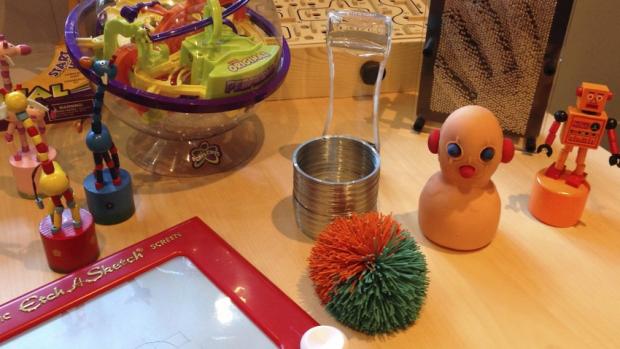Do You Fidget, Fiddle, or Doodle While You Work?
NYU Polytechnic School of Engineering Researchers Seek Online Participants

BROOKLYN, New York—Researchers at the New York University Polytechnic School of Engineering’s Game Innovation Lab know that doodling, fiddling, and fidgeting are anything but trivial. The fascinating and powerful interrelation of bodily movement, cognition, and emotional state has been amply demonstrated, and manipulating physical objects with the hand is known to activate the brain in measurable ways.
The NYU School of Engineering researchers aim to take the benefits of these manipulations into the digital age through a project they call “Fidget Widgets,” which employs small, playful, programmable devices to marry digital and physical play to enhance work.
“Your word processing software doesn't really support doodling—it’s entirely focused on word processing,” explains Mike Karlesky, a computer science doctoral candidate. “So we doodle and fiddle with playthings while we work. Our research explores this transitional area between software and physical work spaces.”
Fidget Widgets that mimic the experience of popping bubble wrap and playing with the desktop toy known as a Newton’s Cradle have already been developed, and the researchers hope to introduce a host of other versions that will help users increase their productivity, enhance creativity, and lessen stress by firing specific areas of the brain.
“For instance, perhaps you need a little boost in creativity or focus, or you need to de-stress a bit. The right electronic widget might help,” Karlesky said. “Perhaps your hand interaction can complement the work on your screen—the numbers in a spreadsheet could change the object in your hand so you would very literally play with your ideas. We hope to tap into the powerful connections among thinking, feeling, and the sensory experience.”
To gain a better understanding of the playful, tactile experiences in which people engage while at work, the researchers are collecting examples from the public. So far, participants have expressed very strong and widely differing preferences on tactile sensations and materials.
Anyone wishing to participate can simply submit a few lines of text, a photo, or a video to http://fidgetwidgets.tumblr.com/. The entry should answer the questions: What objects do you play with while you work? What are they made of? What do you enjoy about them and how they feel? Do they have special meaning to you? Are there specific times you play with them?
“We’ll be analyzing the data for patterns,” explained Karlesky, who is working on the project with Katherine Isbister, director of the Game Innovation Lab and associate professor in the Department of Computer Science and Engineering, and Kacie Kinzer, a doctoral candidate in the Administration, Leadership, and Technology Department of NYU’s Steinhardt School of Culture, Education, and Human Development. “In order for it to be valuable, we’ll need as much input from the public as possible.”
A paper on the project, entitled “Designing for the Physical Margins of Digital Workspaces: Fidget Widgets in Support of Productivity and Creativity,” was delivered at the TEI 2014 (8th International Conference on Tangible, Embodied and Embedded Interactions). It is available at http://dl.acm.org/citation.cfm?id=2540930.2540978.
The Game Innovation Lab at the NYU School of Engineering brings together faculty and students from the School of Engineering and the greater NYU community. The lab's emphasis is on the technical, engineering, and science elements of games and simulations. Sample projects include user interface innovation (sensor-based tracking, multi-touch), network and video quality research, and research on games for learning.





